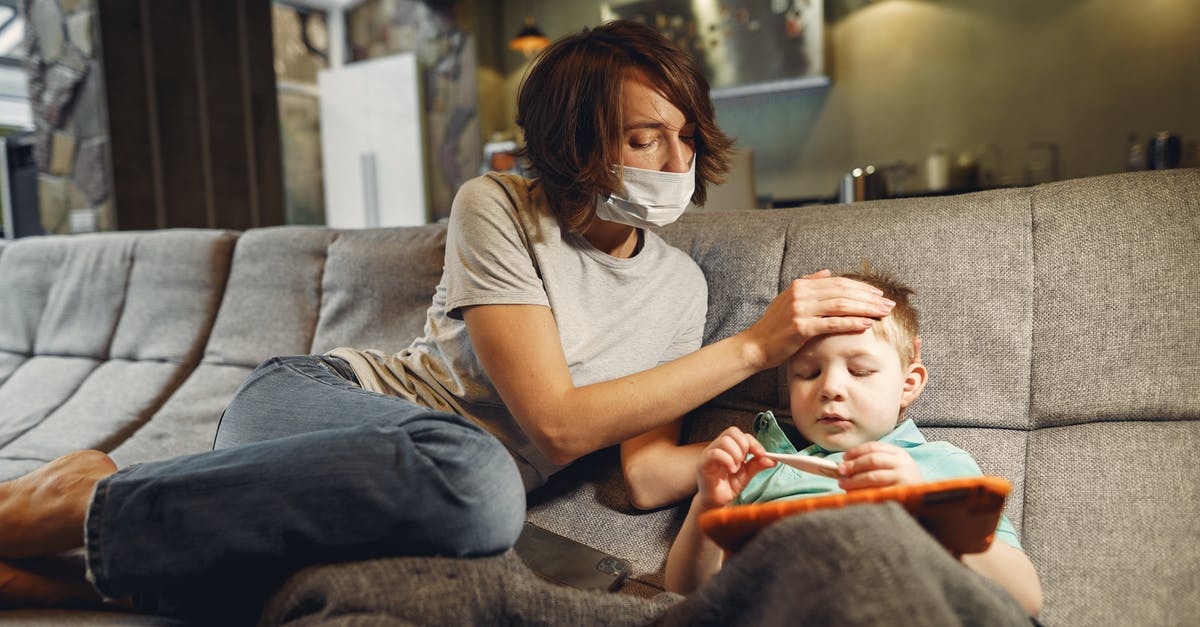Why does strata have to come to room temperature before baking?

I've made strata a few times before, usually for brunches where I have a number of guests coming over and don't want to spend all my time in the kitchen. I always follow instructions in the recipe; I assemble it the night before, refrigerate overnight, and then let it come to room temperature and bake it in the morning.
I've never had any problems, but I'm planning on making this for New Year's brunch that I'm hosting, and I got to thinking about why I need to let the strata come to room temperature before baking it. (Every recipe I've seen for strata says to let it sit on the counter for at least a half an hour.) I bake mine in a glass casserole dish, so I know that one reason for this is to avoid extreme temperature change that could cause the dish to shatter. However, is there any chemistry or physics reason for this - i.e., would baking it (in a disposable aluminum pan, for instance) straight out of the fridge impact the taste/texture?
Best Answer
My guess - and this is just a (somewhat educated) guess - is that it's just to promote more even cooking.
Since you're talking about a layered dish, some parts are definitely going to cook faster than others. If the entire dish starts from room temperature, as opposed to fridge temperature, then that means less time is required to cook it through. Less time and less heat required to cook means that all of the layers will be more likely to end up at similar internal temperatures - as opposed to having burned bread, liquefied cheese, or rubbery eggs (I'm not sure offhand which cooks the fastest).
Even if it's not an issue with the thermal capacities of your individual ingredients, you're also layering these each several times over, creating a very dense product, so there would still be a significant risk of the middle layers being undercooked, or the outer layers being overcooked.
You might be able to bake it straight out of the fridge; however, you would definitely have to increase the cooking time to account for the temperature difference, and there are a lot of variables that come into play which would affect how evenly it cooks: the intensity and location of your oven's heat source(s), the density of the casserole, the kind of baking dish you use - I probably wouldn't chance it, at least not when preparing this for other people.
You tend to see the same recommendation for anything particularly dense, such as a roast, or anything layered, such as a lasagna, and generally, you do want to follow those recommendations for the same reason. They cook rather poorly if you cook them from cold or frozen, leaving you with a charred surface and an only-mostly-cooked interior. It can still happen even if you start off at room temperature, but it's less likely and the effect tends to be less pronounced.
Pictures about "Why does strata have to come to room temperature before baking?"



Why does strata have to sit overnight?
Many stratas call for assembling the strata and allowing it to sit overnight, refrigerated, so the bread soaks up the egg mixture. (The overnight soak is what makes this an ideal make-ahead dish.) When the strata is baked the soaked bread makes it puff up nicely, almost souffle-like.Can you serve strata at room temperature?
The strata will emerge from the oven puffed and gorgeous, then deflate. It can be served piping hot or at room temperature.Why do you bring ingredients to room temperature?
Why Is Room Temperature Important? When at room temperature, eggs, butter, and other dairy ingredients form an emulsion which traps air. While baking in the oven, that trapped air expands and produces a fluffy baked good. For example: a light-textured cake or a tender cupcake.How long can strata be refrigerated before baking?
How Long Can Strata Be Refrigerated Before Cooking? Breakfast egg strata can be refrigerated about two days for optimal baking. The best breakfast strata casserole will be made in advance, kept in the fridge overnight and baked off first thing in the morning. Use a 9X13 glass dish if possible.Let cold-proofed sourdough come up to room temperature before baking?
More answers regarding why does strata have to come to room temperature before baking?
Answer 2
Speaking from experience, it doesn't.
A good way to cook strata out of the fridge in the morning:
Get up and put on your bathrobe.
Place strata in cold oven.
Turn oven up to desired cooking temperature.
Set alarm for normal cooking time of strata plus 10 to 15 minutes (depending on how fast your oven normally heats up).
Remove robe and go back to bed.
Wake up when alarm goes off. Wake your sweetie up too.
Remove strata from oven.
Eat.
This is how I make strata every time, and I've never had a problem with them cooking improperly. I'm not sure why cookbook instructions would stress the need for strata to come up to room temperature; I suspect it's simply something the recipe author was once told and never questioned.
Now, cooking frozen items is different from refrigerated ones. As Aaron points out, putting a frozen casserole directly in the oven can result in it being burnt on the outside and raw on the inside. But the difference in temperature between fridge and room is at most 35 degrees farenheit, and really doesn't affect cooking at all. Additionally, by placing the strata in a cold oven and having it there while the oven is heating, you allow it to gradually come up to temperature just in case there was a difference.
Also, putting a refrigerated pyrex casserole dish full of strata in a hot oven will not cause it to shatter unless it was at the end of its life anyway. The strata acts as a heat sink and prevents any thermal shock to the baking dish. I am also speaking from personal experience here.
Answer 3
One obvious reason is that eggs are a leavening agent, and they rise better when they are not cold.It's the same reason you make a souffle with room-temperature eggs. Not essential, but better in terms of lightness.
Answer 4
I like Fuzzychefs idea for bring the strata up to temp. The recipes I have do say to let the strata sit for 30 minutes or more, but I always understood that to mean if you are not making it ahead of time to give the eggs and other liquids enough time to soak into the bread.
Sources: Stack Exchange - This article follows the attribution requirements of Stack Exchange and is licensed under CC BY-SA 3.0.
Images: Bruno Bueno, Tima Miroshnichenko, Gustavo Fring, Gustavo Fring
